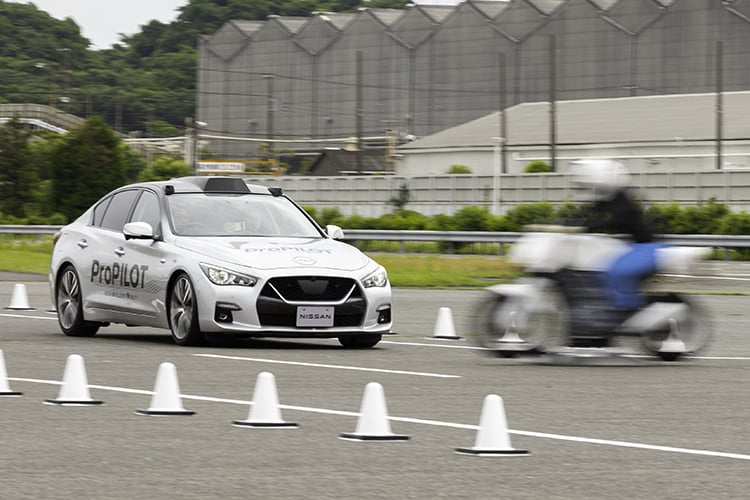
Senior Vice President Takao Asami, head of Nissan’s Research and Advanced Engineering Division, says, “Development of this technology is being carried out under Nissan Ambition 2030, the company’s long-term vision. We are on course to develop collision-avoidance technology utilizing next-generation LIDAR technology by the mid-2020s. Aiming to develop future autonomous driving technologies that customers can use with peace of mind, Nissan is working to fully understand the entire range of accident scenarios by analyzing complex accidents that occur in the real world. Our efforts are aimed to substantially improve accident avoidance.”
The technology features a new control logic for intersection collision avoidance based on ground-truth perception technology utilizing next-generation LIDAR. It can detect an object’s speed, location, and potential risk of a collision from a lateral direction. The system is designed to instantly respond to the changing situation through such steps as emergency application of the brakes or releasing the brakes when the potential risk- has been avoided.
Accidents caused by driver error at intersections can unfortunately result in significant consequences. The in-development system is therefore being designed to provide improved assistance in difficult situations through advanced sensing and decision-making capabilities.
The system utilizes highly accurate, real-time information about the vehicle’s surrounding environment to dramatically enhance collision avoidance. At a Nissan facility here, a test vehicle was used to demonstrate how this technology can automatically perform collision-avoidance maneuvers.
Nissan’s “ground truth perception” technology fuses information from next-generation high-performance LIDAR, radar and cameras. The technology can detect the shape and distance of objects, as well as the structure of the area surrounding the vehicle, in real time with a high degree of accuracy. Utilizing this information, it is possible for the vehicle to instantly analyze the current situation, judge and automatically perform required collision-avoidance operations. This technology can also detect slowed traffic and road obstacles in the distance and execute lane changes accordingly. Importantly, the technology can also provide increased support to drivers in areas where detailed map information is not available.